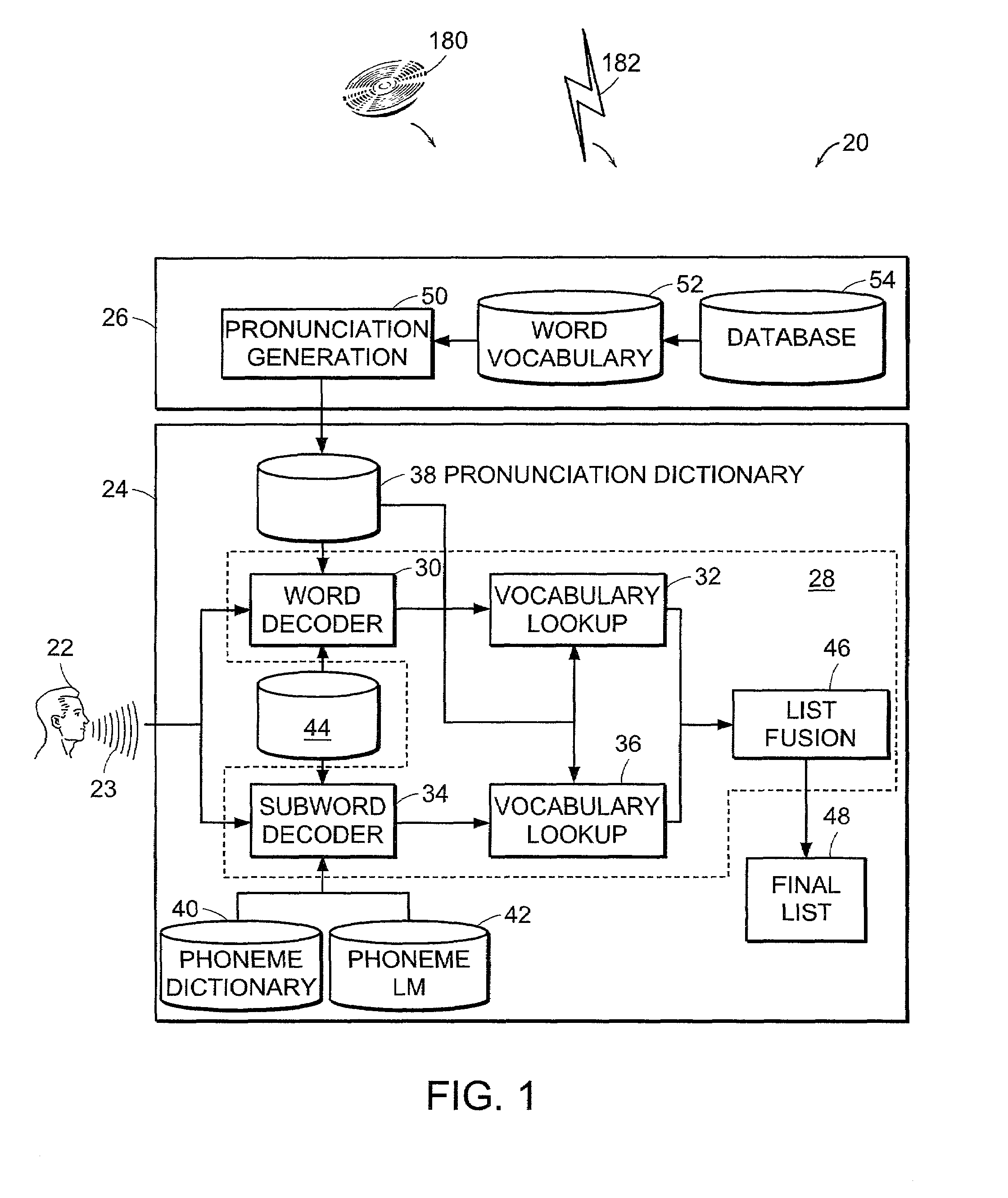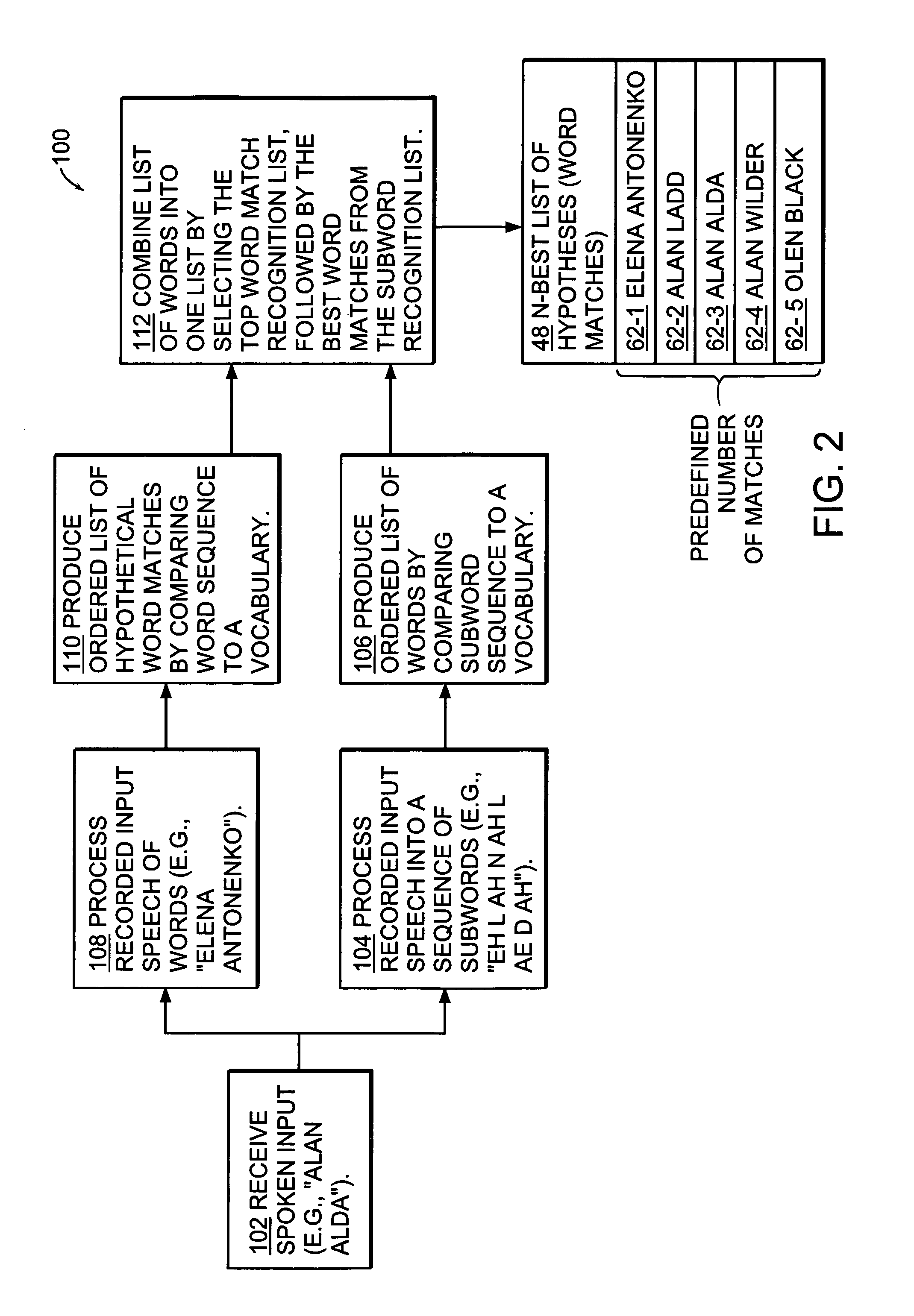Systems and methods for combining subword recognition and whole word recognition of a spoken input
a technology of applied in the field of systems and methods for combining subword recognition and whole word recognition of spoken input, can solve the problem of generating accurate initial n-best lists, and achieve the effect of reducing constraints, reducing the number of possible hypotheses, and producing the n-best list of hypotheses
- Summary
- Abstract
- Description
- Claims
- Application Information
AI Technical Summary
Benefits of technology
Problems solved by technology
Method used
Image
Examples
Embodiment Construction
[0030]A description of preferred embodiments of the invention follows.
[0031]FIG. 1 is a block diagram of the components of a combined speech recognition or detection system 20 including both a subword detection approach and a word detection approach according to the present invention. The speech detection system 20 includes a dictionary generator 26 and a fusion system 24. A user 22 of the system 20 provides a speech query or spoken input 23 that is input to the fusion system 24.
[0032]The dictionary generator 26 is a computing device such as a server, desktop computer or other suitable computing device. The dictionary generator 26 includes a pronunciation generation module 50, a word vocabulary 52, and a database 54. The word vocabulary 52 and database 54 are stored on one or more memory and / or data storage devices such as one or more hard discs. The database 54 is a source for words and speech patterns that make up the word vocabulary 52 (e.g., subset of words in the database 54), ...
PUM
 Login to View More
Login to View More Abstract
Description
Claims
Application Information
 Login to View More
Login to View More - R&D
- Intellectual Property
- Life Sciences
- Materials
- Tech Scout
- Unparalleled Data Quality
- Higher Quality Content
- 60% Fewer Hallucinations
Browse by: Latest US Patents, China's latest patents, Technical Efficacy Thesaurus, Application Domain, Technology Topic, Popular Technical Reports.
© 2025 PatSnap. All rights reserved.Legal|Privacy policy|Modern Slavery Act Transparency Statement|Sitemap|About US| Contact US: help@patsnap.com



